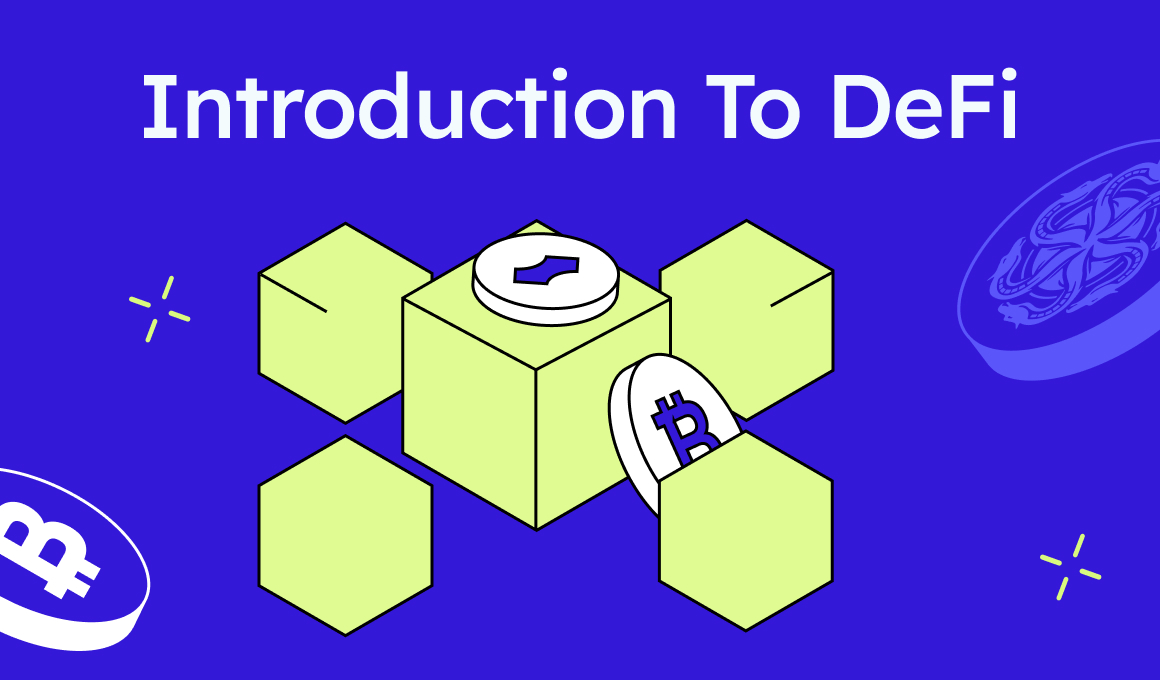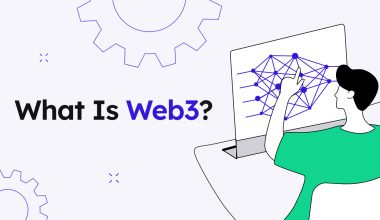Welcome to the world of decentralized finance, more commonly known as DeFi – the new financial system that’s making ripples in the world.
In the past few years, DeFi has gained immense popularity as a revolutionary force in the financial industry. This article aims to provide a comprehensive beginner’s guide to DeFi, explaining its key concepts, benefits, and potential risks.
So, whether you’re a cryptocurrency enthusiast or simply curious about the future of finance, let’s dive into the fascinating world of DeFi.
Understanding DeFi
Decentralized Finance is a revolutionary concept that aims to reshape the traditional financial system. In simple terms, DeFi is like a digital version of the financial services you’re familiar with, such as banking, lending, trading, and investing.
But here’s the revolutionary part: DeFi eliminates the need for intermediaries like banks, brokers, and other financial institutions. Instead, it uses blockchain technology and smart contracts to create a decentralized network where individuals can directly interact with each other.
Imagine being able to borrow money or lend your assets without going through a bank, or trade cryptocurrencies without relying on a centralized exchange. That is the power and promise of DeFi.
One of the key benefits of DeFi is that it promotes financial inclusion by allowing anyone with an internet connection to access its services. It’s not limited to a specific country or socioeconomic status. Plus, it’s typically more affordable since it cuts out the middlemen, reducing fees and transaction costs.
Let’s see how we got here and why.
The emergence of DeFi
The birth of decentralized finance can be attributed to several key factors and events that have shaped its creation. It all started with the introduction of blockchain technology, which laid the foundation for a decentralized financial system. Bitcoin, launched in 2009, showcased the potential of blockchain as a secure and transparent ledger for peer-to-peer transactions.
However, it was Ethereum, introduced in 2015, that truly revolutionized the space by enabling the creation of smart contracts. These self-executing contracts, coded on the blockchain, paved the way for the development of decentralized applications (DApps) and the implementation of complex financial processes without the need for intermediaries.
Simultaneously, dissatisfaction with traditional financial systems grew following the global financial crisis of 2008. People sought alternatives that would grant them more control over their finances and reduce reliance on centralized institutions. Blockchain technology, with its decentralized nature, provided a promising solution.
The rise of initial coin offerings (ICOs) in 2017 further fueled the momentum. Blockchain projects began raising funds by selling tokens to investors, demonstrating the potential for decentralized fundraising and inspiring innovation in the blockchain space. Although the ICO boom had its speculative aspects, it showcased the demand for decentralized financial solutions.
As blockchain technology matured, DeFi protocols and applications started to emerge around 2018. Projects like MakerDAO, Compound, and Uniswap pioneered various aspects of decentralized finance, including lending, borrowing, decentralized exchanges, and liquidity provision. These protocols leveraged smart contracts to automate financial processes, making them more efficient and accessible to individuals.
This booming growth has not stopped or slowed down even now in 2023. The number of applications, use cases, and projects continues to grow and expand. DeFi has turned into a booming industry and a force to be reckoned with, with no signs of stopping soon.
Let us explore the many benefits and promises of DeFi, and we can start to better understand why it’s so popular.
Core Features of DeFi
Open and Permissionless
DeFi platforms are open to anyone with an internet connection, and users have the freedom to participate without any restrictions. There are no gatekeepers or middlemen controlling access to financial services.
Transparency
DeFi operates on public blockchains, allowing for transparent and auditable transactions. Every transaction can be traced and verified, promoting trust and reducing the possibility of fraud.
Smart Contracts
DeFi relies on smart contracts, which are self-executing agreements coded on the blockchain, to automate financial processes. Smart contracts remove the need for intermediaries, ensuring transactions are executed as intended without human intervention.
Whenever the conditions coded in a smart contract are fulfilled, the “deal” is automatically sealed – this removes the need to trust the other party, and eliminates the middleman, making operations cheaper, faster, and available round the clock.
Interoperability
DeFi projects can integrate and interact with each other, creating a seamless financial ecosystem, instead of a multitude of walled gardens that operate on their own. This interoperability allows users to access a variety of services and enables composability, where different DeFi applications can be combined to create new functionalities.
Benefits of DeFi
Financial Inclusion
DeFi provides access to financial services for the unbanked and underbanked populations worldwide. With just an internet connection, anyone can participate, regardless of their location or socioeconomic status.
Lower Costs
By removing intermediaries, DeFi reduces fees and transaction costs associated with traditional financial services. This can result in significant savings for users, making financial activities more affordable and accessible.
Enhanced Privacy and Security
DeFi applications prioritize user privacy and security by leveraging the cryptographic nature of blockchain technology. Users have control over their personal data and can engage in transactions pseudonymously, protecting their identity. This is a key characteristic of Web3 – the proposed next iteration of the Internet.
Programmability and Innovation
DeFi platforms allow developers to build on top of existing protocols, fostering innovation and the creation of new financial products. The programmable nature of smart contracts enables the automation of complex financial processes, opening up endless possibilities.
Potential Risks and Challenges
As promising and full of potential DeFi is, it is not without its challenges and imperfections. Some of these have to do with software vulnerabilities that can be exploited by hackers, while others have to do with regulation. Because DeFi is a new industry, there is also the issue of volatility (which can also be used to your benefit), and technicality, which prevents non-tech people from using DeFi services.
Smart Contract Vulnerabilities
While smart contracts bring automation and efficiency, they can also be prone to coding bugs and vulnerabilities. Flaws in smart contracts can lead to security breaches and financial losses. It is essential for users to conduct due diligence and understand the risks associated with each DeFi protocol.
Regulatory Uncertainty
DeFi operates in a rapidly evolving regulatory landscape. Governments and regulatory bodies are still catching up with the technology, leading to uncertainty and potential legal challenges. Users should be aware of the regulatory environment in their jurisdiction and exercise caution.
Market Volatility
DeFi platforms often involve cryptocurrencies, which are known for their price volatility. Market fluctuations can impact the value of assets held or invested in DeFi protocols. It is crucial for users to understand the risks associated with crypto assets and make informed decisions based on their risk tolerance.
Lack of User-Friendly Interfaces
While the DeFi ecosystem has made significant strides in user experience, there is still room for improvement. Some platforms may have complex interfaces and technical jargon, which can be intimidating for newcomers. Efforts are being made to create more user-friendly interfaces to attract a wider audience.
Popular DeFi Use Cases
Decentralized Exchanges (DEXs)
DEXs enable peer-to-peer trading of cryptocurrencies without the need for a central authority. They provide users with control over their funds and offer a wide range of trading pairs. Uniswap, SushiSwap, and PancakeSwap are among the most popular DEXs in the DeFi space.
Decentralized Lending and Borrowing
DeFi platforms allow users to lend or borrow digital assets without intermediaries. Through smart contracts, borrowers can access loans, while lenders earn interest on their deposited funds. Aave, Compound, and MakerDAO are prominent examples of lending and borrowing protocols.
Stablecoins
Stablecoins are cryptocurrencies designed to maintain a stable value by pegging them to traditional fiat currencies or other assets. They provide stability in a volatile market and facilitate seamless transactions within the DeFi ecosystem. Tether (USDT), USD Coin (USDC), and Dai (DAI) are well-known stablecoins.
The Future of DeFi
DeFi has the potential to disrupt traditional financial systems and reshape the future of finance. As the technology matures, we can expect to see increased adoption, improved scalability, and enhanced security measures within the DeFi ecosystem. Integration with real-world assets, such as stocks and commodities, could also expand the scope and utility of DeFi platforms.
Furthermore, advancements in Layer 2 solutions and cross-chain interoperability may address scalability challenges and foster greater connectivity between different blockchain networks, enhancing the overall DeFi experience. Moreover, regulatory frameworks are likely to evolve to accommodate DeFi while ensuring consumer protection and market stability.
Conclusion
Decentralized finance has emerged as a powerful force in the financial industry, providing individuals with greater control, accessibility, and opportunities in managing their financial activities. While DeFi offers numerous benefits, it is important to approach this space with caution, understanding the risks involved and conducting thorough research before participating.
As DeFi continues to evolve, it holds the promise of a more inclusive, efficient, and transparent financial system. By staying informed and embracing this technological revolution responsibly, we can unlock the potential of decentralized finance and shape a future where financial empowerment is accessible to all.



